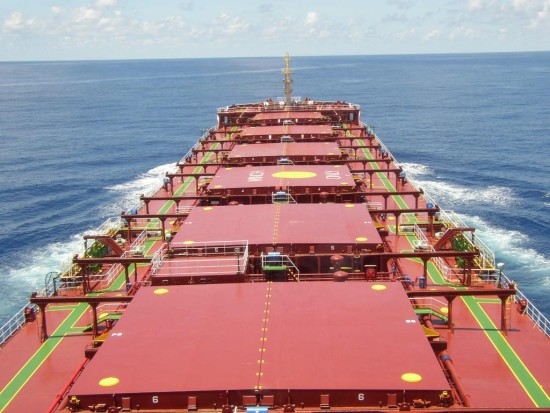The ship supply surplus built up in 2010-2012 and slowdown in Chinese raw materials imports, especially coal, continue to drive overall weakness in the dry bulk shipping market, according to Hong Kong-based dry bulk shipping company Pacific Basin.
“This weakness will continue to affect shipping businesses and could result in more companies experiencing financial distress along the lines of Daiichi Chuo Kisen Kaisha’s recent filing for bankruptcy protection. We have no exposure to Daiichi,” Pacific Basin said.
The pace of newbuilding deliveries in 2015 has closely tracked 2014 and the lowest rate of new ship additions in 15 years. However, the high level of scrapping in the first half of 2015 gave way to reduced scrapping in the third quarter due to the improved freight market. As a result, the overall dry bulk fleet expanded by 1.3% net during the quarter, having previously seen no net growth since the end of January.
Secondhand values have been substantially flat in recent months. Benchmark five year old 32,000 dwt Handysize bulk carriers are currently valued by Clarksons Platou at USD 13 million which is unchanged since May. Handysize newbuildings are valued at USD 20.5 million and the significant gap between newbuilding and secondhand prices continues to discourage new ship ordering and favours buying secondhand ships.
The overall dry bulk orderbook has reduced to about 17% of the trading fleet, but delays, cancellations, conversions and shipyard defaults – primarily in China – are leading to fewer actual deliveries than scheduled at the start of the year.
On the demand side, the third quarter of 2015 saw an improvement in average market rates for bulkers with Handysize and Handymax market spot rates averaging USD 6,000 and USD 8,340 per day net respectively.
When compared to last year, this was a marginal growth, however these average market rates represent a 23% and 30% improvement on the previous quarter.
According to Pacific Basin, the quarter on quarter improvement was largely driven by healthier conditions in the Atlantic on strong South American agricultural exports.
Atlantic spot market rates reached early 2014 levels and have since declined as the South American season subsides.
By contrast, the Pacific freight market has been relatively flat, demonstrating only a moderate improvement through July which has since been reversed.
Weak demand growth in the Pacific was attributed to the continued slowdown in Chinese coal and iron ore imports which together represent a large proportion of overall dry bulk trade. Year-to-date coal imports are 30% down year on year while iron ore imports have been largely flat.
Minor bulk trade volumes since March were higher than in the same months in 2014 and have lent some support to demand for Handysize and Handymax ships, such as bauxite imports of bauxite and imports of soybeans and cereal grains are substantially up.
Copyright Ships & Ports Ltd. Permission to use quotations from this article is granted subject to appropriate credit given to www.shipsandports.com.ng as the source.

